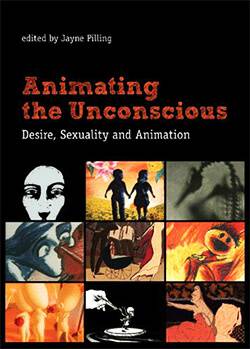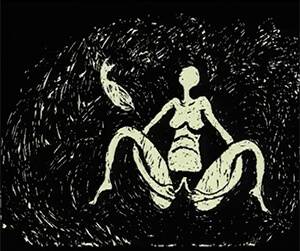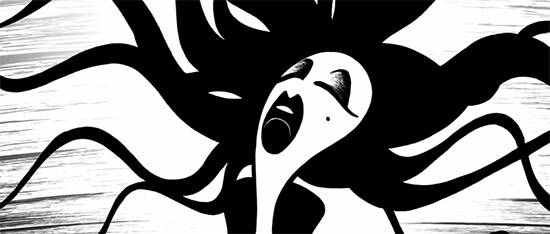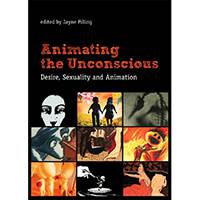‘Animating The Unconscious’ Book Review
 Animating The Unconscious: Desire, Sexuality and Animation
Animating The Unconscious: Desire, Sexuality and Animation
Ed. Jayne Pilling
Columbia University Press
Given the degree to which sexuality is such a presence in most forms of media, entertainment and advertising, the lack of acknowledgement toward the role it plays in animation is a little surprising. Though our humble industry, like all others, has its fair share of the sex-obsessed and the sex-indifferent alike, I’m fairly certain that most would contest the notion that animation is an undersexed industry; For all those hours hunched over a lightbox, computer screen or set we need to cut loose somehow, surely?
We’re thankfully living in an age where it is regarded as a far more emotionally healthy impulse to be assured and secure in one’s sexual leanings. Most socially responsible citizens are able to assess the right time, place and audience for expressing such inclinations – generally as a society we don’t yell out the details of our Saturday night exploits in church the following morning – but there’s no reason animation should be considered any less legitimate an artistic medium to celebrate or comment on sexual matters.
Seeking to shed some light on this very subject, Jayne Pilling (whose previous works of note in animation literature include A Reader in Animation Studies, an insightful collection of essays begging for a follow-up some 15 years later, and Animation: 2D and Beyond, a cross-section of prominent animation figures from the beginning of the millennium) has edited the densely-packed Animating The Unconscious, with a focus specifically on the role that sexual desire and its multitudinous forms play in animation. Said forms naturally span heavily-shrouded symbolism to the literal, direct approach. Combining the structure of the two books mentioned above somewhat, the overall presentation includes essays, analyses and a range of artistic case studies, the filmmakers contributing themselves in some instances. As such the book has more of a flow than most collections of its type, with a fair amount of consideration for how each segment interweaves with that which precedes it.

“What She Wants” (Dir. Ruth Lingford, 1994)
The major areas of interest are largely determined by the prominence and skill of the filmmakers under scrutiny. The key themes of filmmaker Ruth Lingford’s work are explored by fellow artist Simon Pummell, then subsequently elaborated on by Lingford herself before partially reciprocating by contributing her own astute assessment of the male perspective and its own role in celebrating sexuality through film, citing Pummell and Andreas Hykade, whose own prominent shorts Ring of Fire and We Lived In Grass are later discussed with a cut and dry clarity that stands out as perhaps the book’s strongest chapter. The work of Michaela Pavlátová, presently celebrated for her masterwork of female sexuality-through-fantasy Tram, is given similarly well-considered analysis in Olivier Cotte’s exploration of her prior works such as Repete, Word Words Words and Forever & Forever.
As indicated above, the most worthwhile function a book of this type can provide is by elaborating on films the reader will feel compelled to hunt out for themselves as companion viewing. This is largely the case for the artists whose films are discussed, not least of which being Alys Hawkins, whose self-analysis of the ways her work explores attitudes toward body and mind from different perspectives and time periods makes for one of the book’s more endearing case studies. Hawkins’s candour in regard to the unstructured development of her work sheds particular light on the role of research and how it can directly expedite a film’s completion or confuse the direction of a story with too many ideas being at odds with one another.

“Forever & Forever” (Dir. Michaela Pavlátová, 1998)
Other particularly insightful sections of the book deal with the territory of production itself, such as a breakdown of Annabelle Pangborn’s approach to score composition (for Simon Pummell’s The Secret Joy of Falling Angels) complete with scanned notes which determine its structure and role in the film; Script development, as with Ian Gouldstone’s intense, BAFTA winning RCA short Guy101; and story art (Michèle Cournoyer’s The Hat). As far as conceptual development goes, it is the look into Christine Roche’s raw, rudimentary notebook sketches that form the basis for her mixed-media collaboration with Marjut Rimminen The Stain that makes perhaps the most important point: Whether narrative or abstract, it is the degree to which an idea is thought-through that most contributes to the effectiveness and watchability of the finished film.
Inevitably the caliber of writing ability fluctuates between writers in terms of how engaging and clearly communicated their contributions are, though to Pilling’s credit as editor the book remains inherently readable throughout. There are also certain areas and practitioners worthy of discussion that are strangely unexplored (Noteworthy contributors to the landscape of sexuality-infused animation such as Joanna Quinn and Signe Baumane are mentioned only in passing and, given the book’s relatively recent publication, discussions of more recent work from Ruth Lingford and Michaela Pavlátová are sadly absent but make a solid case for a second edition). Curiously it seems that the marriage of sexuality and humour is given a back seat, vaguely implying the arguable point that the subject matter is, on some level, less artistically relevant in such circumstances.

“Ring of Fire” (Dir. Andreas Hykade, 2000)
Though not extensive, Animating The Unconscious succeeds in hinting at a larger world of adventurous animation filmmaking the reader will doubtless feel inspired to explore further (it’s worth mentioning that there are several volumes of BAA DVDs which serve as a companion series, of sorts). In short, like all worthwhile sexual experiences themselves, it leaves you largely satisfied yet wanting more.
Items mentioned in this article:


